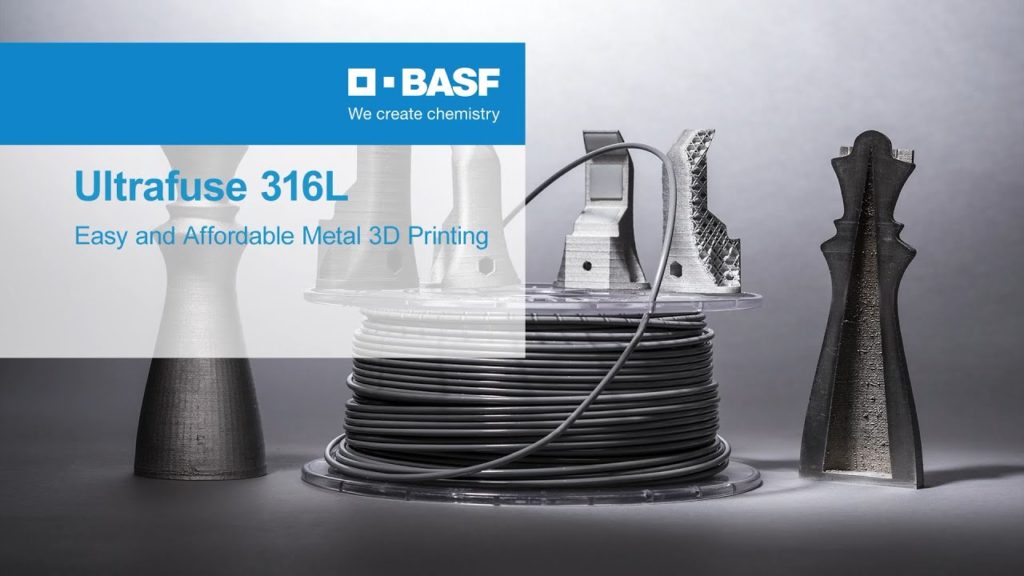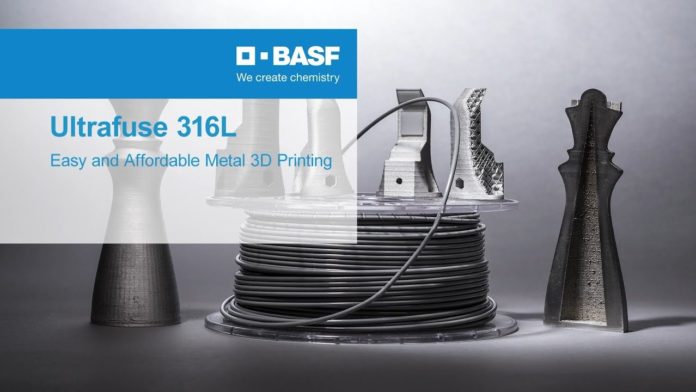
At Formnext 2018, the communication manager of BASF told me the company would never produce metal materials that will be processed on metal 3D Printers. So, when I first read the title of this press release, I thought myself: “the company has changed its mind (and there is nothing wrong with changing one’s mind), they are delving into metal additive manufacturing”. While reading the press release, I realized how I was wrong. Surprisingly and interestingly, BASF is launching a metal filament for FFF 3D Printing.
Named Ultrafuse 316L, the metal- polymer composite for Fused Filament Fabrication (FFF) is designed for cost-efficient production of fully metal parts. Applications with this material include prototypes, metal tooling, and functional metal parts to name a few.
At the end of the additive manufacturing process, the end part is 316L stainless steel.
So, what’s this Ultrafuse 316L?
Ultrafuse 316L integrates polymer properties and requires the same type of 3D printing processes than usual FDM Materials. As a matter of fact, it has already been proven that the filament can be printed on the Ultimaker S5. The only difference with other FDM materials is that in this specific case, the polymer content of the Ultrafuse 316L acts as a binder. Once the main polymer content of the “green part” is removed, one obtains a brown part made up of pure metal particles and a residual binder (secondary binder).
Furthermore, the company explains that the sub-sequent sintering process at temperatures right below the melting temperature of the metal removes the secondary binder from the brown part and causes the metal particles to coalesce. The material reaches its final properties post-sintering, for example with regard to hardness and strength.
“Ultrafuse 316L can, under certain conditions, be processed on any conventional, open-material FFF printer,” explains François Minec, Managing Director, BASF 3D Printing Solutions. “Our goal was to develop a high-quality metal filament that makes the additive manufacturing of metal parts considerably easier, cheaper, faster, and accessible to everyone.”
Comparing the metal filament to MIM
“In comparison to Metal Injection Molding (MIM), the Ultrafuse 316L offers an office-friendly solution, which opens new production opportunities,” says Athanassios Kotrotsios, Managing Director, iGo3D. “To reach the full potential of the metal fila-ment and to ensure a solid start, it is necessary to understand that Ultrafuse 316L is not a conventional filament,” explains Kotrotsios. “Our goal is it to provide full-service packages and support from the first request up to the finalized and sintered part, to implement metal 3D printing as a natural component in your manufacturing process.”
Collaborations with Ultimaker, Igo3D and MatterHackers
Partnerships with Ultimaker, Igo3D and MatterHackers enable BASF to achieve a true shift in the way industrials use desktop 3D Printers.
“The Ultimaker S5 raises the bar for professional 3D printing by offering a hassle-free 3D printing experience with industrial-grade materials. We are proud to an-nounce that print profiles for Ultrafuse 316L will be added to the Ultimaker Market-place”, says Paul Heiden, Senior Vice President Product Management, Ultimaker. “3D printing professionals worldwide can then use FFF technology to produce func-tional metal parts at significantly reduced time and costs compared to traditional methods.”
You can now post free of charge job opportunities in the AM Industry on 3D ADEPT Media.
For further information about 3D Printing, follow us on our social networks and subscribe to our newsletter : Facebook, Twitter, LinkedIn & Instagram !
Would you like to be featured in the next issue of our digital magazine? Send us an email at contact@3dadept.com






